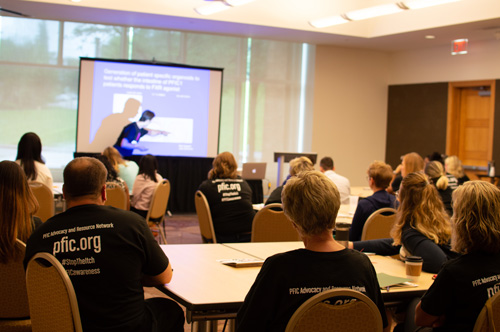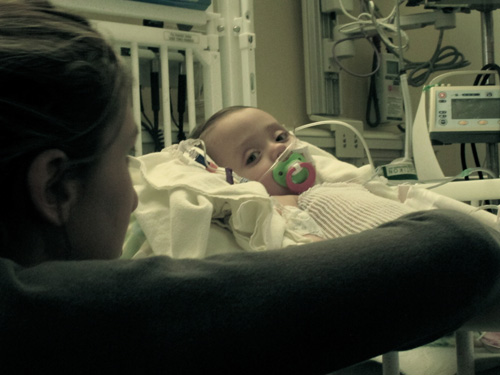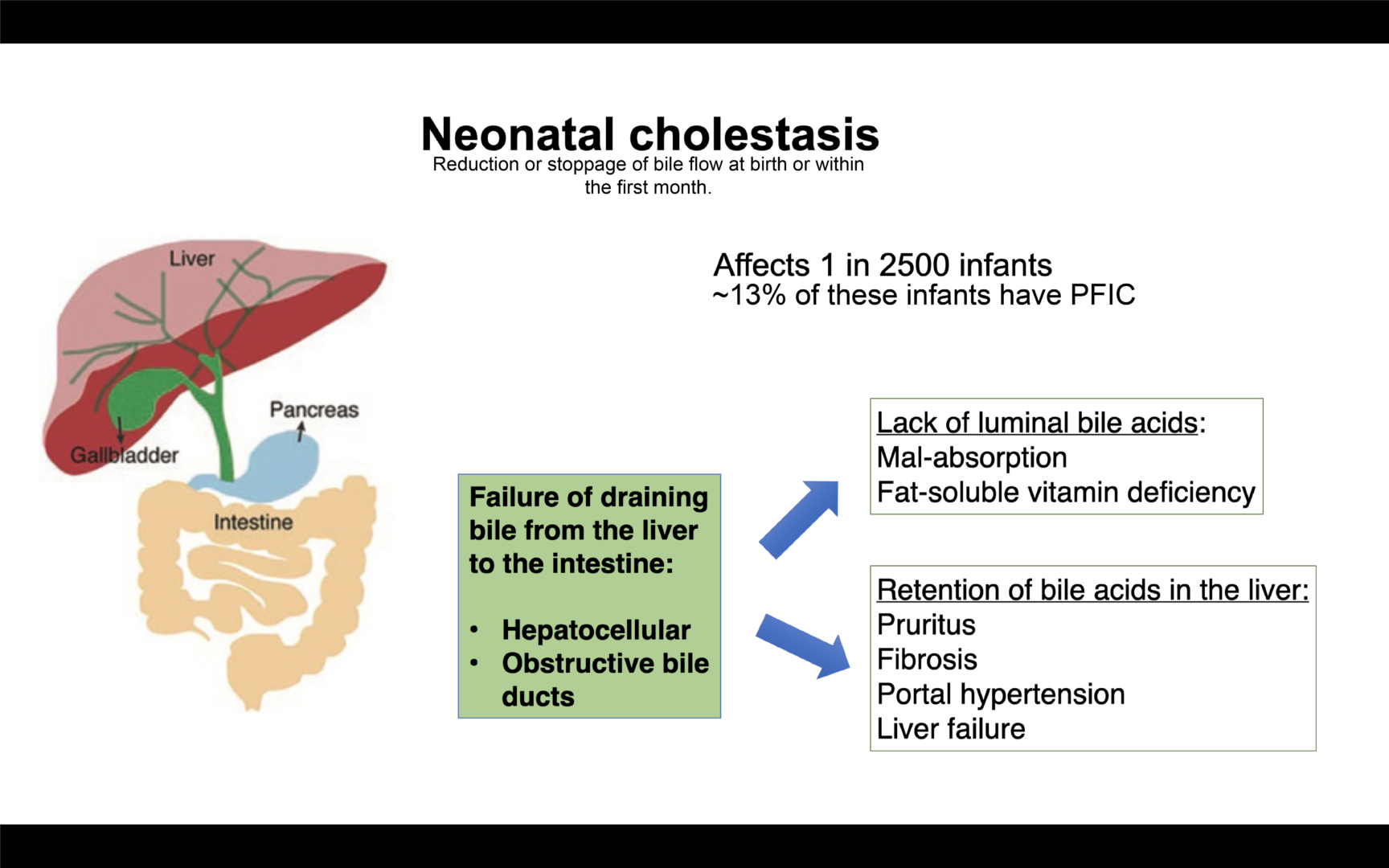
What does PFIC stand for?
Progressive: Tending to get worse over time
Familial: Originally described in families and related to changes in genes
Intrahepatic: Involves disease inside the liver
Cholestasis: Poor bile flow and build-up of substances in the liver that would normally be carried out of the liver into bile and then the intestines
Progressive familial intrahepatic cholestasis (PFIC) is an umbrella term. It refers to a family of genetic liver diseases that present with intrahepatic cholestasis. These include:
- FIC1 deficiency (ATP8B1 mutations, PFIC 1, BRIC 1)
- BSEP deficiency (ABCB11 mutations, PFIC 2, BRIC 2)
- MDR3 deficiency (ABCB4 mutations, PFIC 3, BRIC 3)
- TJP2 deficiency (TJP2 mutations, PFIC 4)
- FXR deficiency (NR1H4 mutations, PFIC 5)
- MYO5B deficiency (MY05B mutations)
- USP53 deficiency (USP53 mutations)
- MRP9 deficiency (ABCC12 mutations)
- LSR deficiency, types unknown
- New and emerging PFIC related disorders.
Although these rare liver diseases can have overlapping symptoms, they are each unique. Each type can differ its prognosis, progression and treatment.
What is the Liver?
The liver is the largest solid organ in the body. It plays an essential role in many different body functions, such as removing toxic substances from the blood, or producing proteins and biochemicals (bile) that are necessary for digestion and growth.


What is Liver Disease?
Doctors use the term “liver disease” to refer to a number of conditions where the liver is injured or does not work as well as it should. There are many different types of liver diseases. They have a wide variety of causes, including gene mutations, viruses, cancer, or drugs.
“Cholestatic liver disease” is a type of liver disease where cholestasis is present. Cholestasis is when the normal flow of bile from the liver is reduced or blocked. The flow of bile to the liver is one of many important functions of the liver. The cholestasis can occur both inside (intrahepatic) and outside (extrahepatic) the liver.
PFIC is one of several cholestatic liver diseases. Other cholestatic diseases include biliary atresia, Alagille syndrome and primary sclerosing cholangitis.
What is bile?
Liver cells (“hepatocytes”) are responsible for making bile. Bile is a yellow fluid that contains a number of compounds including bile salts, phospholipids, cholesterol and waste products from the body.
What is a bile acid?
Bile acids are powerful detergents. Your body uses them to help emulsify and break down fats during digestion. The body makes bile acids in the liver using cholesterol. In a healthy individual, bile acids are transported from the liver to the intestines. Once in the intestine, bile acids help the body absorb fats, fat soluble vitamins and other fat-soluble nutrients. The bile acids then circulate back to the liver where they will be reused. This process of bile acid circulation between the liver and intestine is called enterohepatic circulation.

Signs of cholestatic liver disease
- Jaundice (yellowing of skin or eyes)
- Swollen abdomen
- Dark yellow or brown urine
- Pale/acholic stools (stools that are pale, grey or white in color)
- Bleeding or easy bruising
- Poor growth
- Vitamin Deficiencies (A, D, E, K)
- Vitamin A – can lead to problems with vision
- Vitamin E – can lead to problems with balance, strength and coordination
- Vitamin D – can lead to poor bone formation and an increased risk of broken bones
- Vitamin K – can lead to bleeding problems, which can be very dangerous especially if the bleeding occurs in the brain
